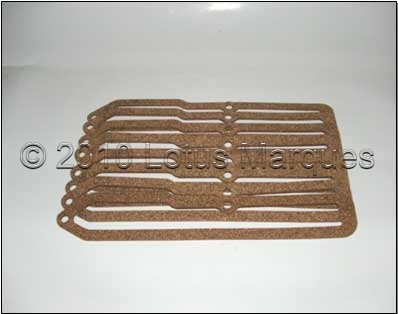Every Lotus Twin Cam engine is now dimensionally different and this makes it difficult to build an engine that is completely oil-tight.
However, this can be achieved by carefully selecting the correct lip seals, gaskets and sealants.
One area that requires special attention is the gasket joint between the cylinder head and timing chest.
It is essential to select the correct thickness gasket so as to create an oil tight seal.
With the passage of time and numerous engine rebuilds, the cylinder head and block contact surfaces are often machined to remove corrosion marks.
Whilst this may not appear to be significant it has an effect on the gap between the cylinder head flame face and the top of the timing chest.
As metal is removed from the cylinder block top face, it closes the gap between the cylinder head the timing chest.
This has two outcomes as follows;-
1) The engine compression ratio is increased
2) The top timing chest gasket needs to be thinner so as not to over compress the cork gasket.
As metal is removed from the cylinder head it does not directly affect the gap between the cylinder head the timing chest.
This has two outcomes as follows;-
1) The engine compression ratio is increased
2) Eventually the cylinder head becomes so thin that it is necessary to introduce an extra thick head gasket to drop the compression ratio.
Installing an extra thick head gasket increases the gap between the cylinder head flame face and the top of the timing chest
This in turn means an extra thick timing chest gasket needs to be used to close the larger gap created between the cylinder head and timing chest.

Dummy installing the twin cam cylinder head with a head gasket on the cylinder block allows the critical measurement to be made between the cylinder head and the top of the timing chest.
Once this measurement is known then the correct cork gasket may be selected.




